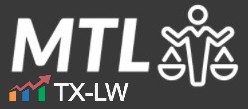The Goldilocks Principle says that the best outcomes are achieved by finding a balance. It looks for the “just right”—neither too much nor too little.
This concept applies not only to storytelling but also to tax recordkeeping. Taxpayers have to strike a balance in maintaining records that are thorough enough to satisfy the IRS but not so burdensome that they become unmanageable.
The recent case of Wright v. Commissioner, T.C. Summ. Op. 2024-9, provides an opportunity to consider when records are too much rather than too little.
Contents
Facts & Procedural History
This case involved three taxpayers who owned various businesses, including real estate, a restaurant, and a construction business. Their businesses were structured as an S corporation and sole proprietorships.
The IRS audited their income tax returns and issued deficiency notices. As with most IRS audits, the dispute was over whether business tax deductions were allowable given the taxpayer’s records. This included car and truck expenses, home office expenses, travel expenses, cost of goods sold, meals and entertainment, and various other expenses. The total for these expenses was approximately $50,000 over a three year period.
The dispute ended up in the U.S. Tax Court. The court was tasked with determining how much, if any, of the expenses were allowable. This focused on the taxpayer’s records, which the court described as follows:
The [taxpayers’] 44 Exhibits comprise 1,882 pages. Those pages reproduce even more thousands of photocopied bills, receipts, and other claimed evidence of payments. Some of the photocopies show handwritten annotations on the copied document. Some of the Exhibits contain copies of adding machine tapes, although many of those tapes are only partially complete.
The question was whether the records were sufficient to substantiate the approx. $50,000 of business expenses.
The Tax Recordkeeping Rules
The general recordkeeping rule for federal taxes is set out in Section 6001.
This rule just says that “Every person liable for any tax imposed by this title, or for the collection thereof, shall keep such records, render such statements, make such returns, and comply with such rules and regulations as the Secretary may from time to time prescribe.”
There are a few types of expenses that have higher recordkeeping rules, such as travel, meals and entertainment expenses. For these types of expenses, Section 274(d) says that no deduction is allowed:
unless the taxpayer substantiates by adequate records or by sufficient evidence corroborating the taxpayer’s own statement (A) the amount of such expense or other item, (B) the time and place of the travel or the date and description of the gift, (C) the business purpose of the expense or other item, and (D) the business relationship to the taxpayer of the person receiving the benefit.
The are other more nuanced provisions for various tax deductions, such as those for deprecation, tax basis, foreign tax credits, etc.
The Disputable, But Flexible Approach
Reviewing the rules above, you probably noted that there is no specific list of records to keep. There are no directions on how to prepare and compile tax records. And there is not even a record retention date provided for in the rules. The rules are silent on these topics.
This is why there are so many disputes with the IRS over records. Congress set up the dispute. Taxpayers are put in the position of saying that their records are sufficient, and the IRS invariably takes the position that they are not. The IRS’s administrative process is built around this, with an examination function that often seeks perfection in terms of recordkeeping, and then an IRS appeals function that settles cases on a percentage basis. In this light, the recordkeeping rules and process are intended to reign in taxpayers while allowing those
In the absence of black letter rules, the courts have adopted rules for what records are sufficient and when estimates are permissible. One can find support in the court cases for a very liberal interpretation and other cases that are exceedingly strict.
The cases can be reconciled by considering whether the taxpayer’s position is reasonable and whether the taxpayer and their records seem to be credible. Reasonable estimates by a taxpayer whose position and records seem credible may get a pass. Taxpayers who fail one of these two considerations often do not get a pass.
The Shoebox Method
That brings us back to this court case. In this case, the court described the taxpayers records as follows:
Petitioners’ approach brings to mind the shoebox method of presenting evidence. See Patterson v. Commissioner, T.C. Memo. 1979-362, 1979 Tax Ct. Memo LEXIS 162, at *7 (defining the unacceptable shoebox method as: “attaching photocopies of numerous cash register tapes and of similar bits of paper to [the taxpayer’s] return[ ], without making any effort on the return[ ] or on brief, and only a slight effort in oral testimony, to link any item to a deductible trade or business expense transaction”).
The Patterson case involved a school teacher who was attempting to deduct various personal expenses on his Schedule A. The court in that case did not beleive that the taxpayer was entitled to deduct the expenses as he did not show that he sought reimbrusement from his employer. That is different from the current case in which there is no doubt that the taxpayers had legitimate expenses.
Spreadsheets & Explanations Needed
The similarity in the cases seems to be that the taxpayers in both cases were told by the court how to present the expenses to the court and they both failed to do so. The court in this case specifically asked the taxpayers to prepare and attach a spreadsheet to their court filing.
The court in this case instructed the taxpayers to prepare a spreadsheet detailing each contested adjustment. This spreadsheet was to include proposed findings of fact with numbered, concise statements of essential fact, each supported by specific references to pages of the transcript, exhibits, or other sources. For each adjustment, the spreadsheet needed to provide evidence that the disallowed amount was an ordinary and necessary business expense, that the full amount reported was paid, and that any special requirements were satisfied, such as the names of attendees at a business meal.
In response to the court’s instructions, the taxpayers provided a 34-page spreadsheet detailing 278 claimed business meals across three years. This spreadsheet included columns for tax year, exhibit number, exhibit page number, date, venue, attendees, amount, and reason for the event. The spreadsheet aimed to correlate the voluminous receipts and annotations with specific business expenses, attempting to meet the court’s requirement for clear and organized evidence to substantiate their deductions.
Despite these efforts, the spreadsheet and supporting documents often lacked credibility and clarity, failing to convincingly link the expenses to legitimate business activities.
The Takeaway
This case helps explain how one is to submit records to the IRS and to the court. Records for expenses generally need to be added up and the taxpayer has to be able to provide the qualitative explanation for each entry. Even accounting records alone may not be sufficient. With that said, all of these rules can be overlooked if the taxpayer has well organized records for tax deductions that seem reasonable in amount and taxpayers if the court perceives the taxpayer to be honest and credible. This is where hiring a good bookkpeeper or tax attorney who can really come in handy, as they can often help avoid the perception issues that can arise in presenting records to the IRS and to the court.
In 40 minutes, we'll teach you how to survive an IRS audit.
We'll explain how the IRS conducts audits and how to manage and close the audit.



